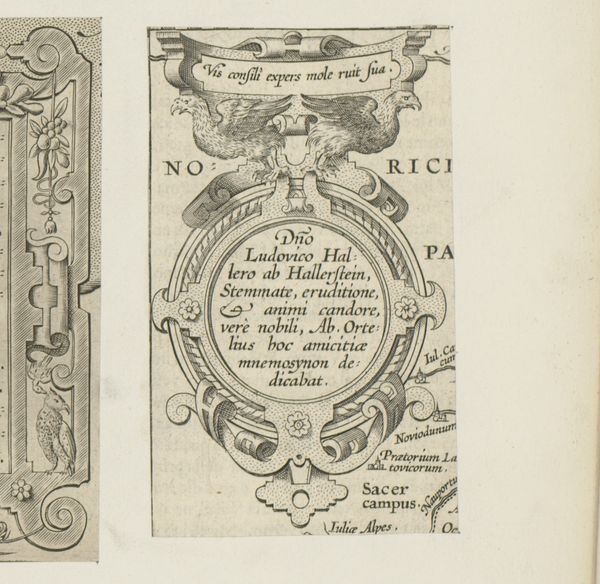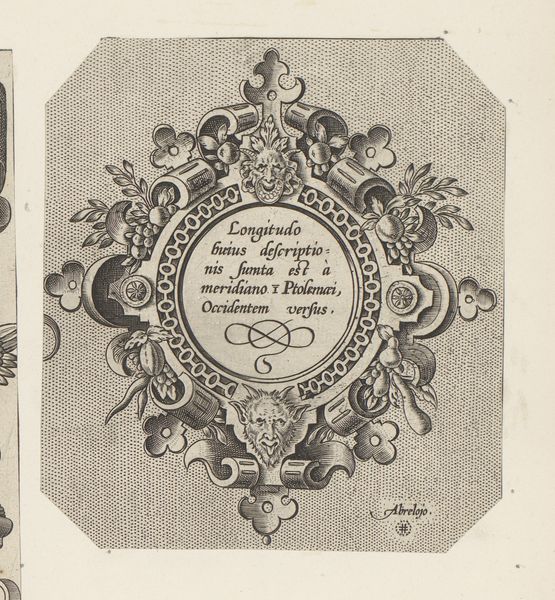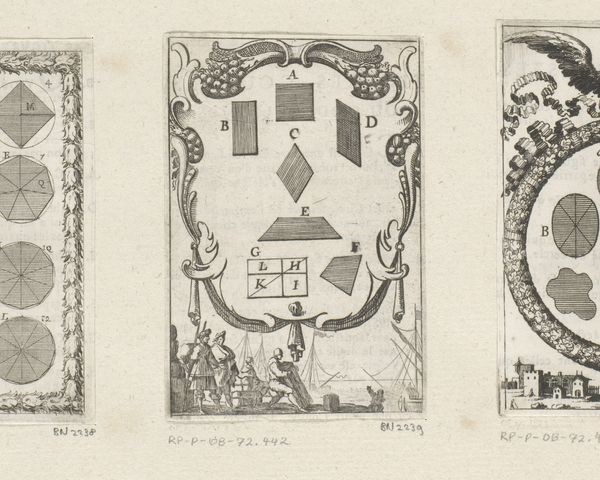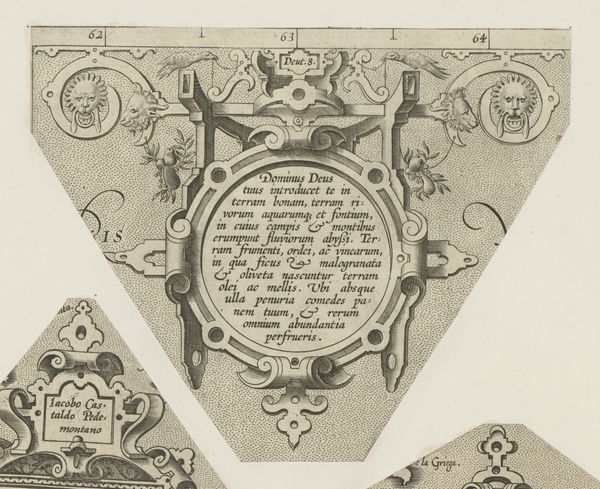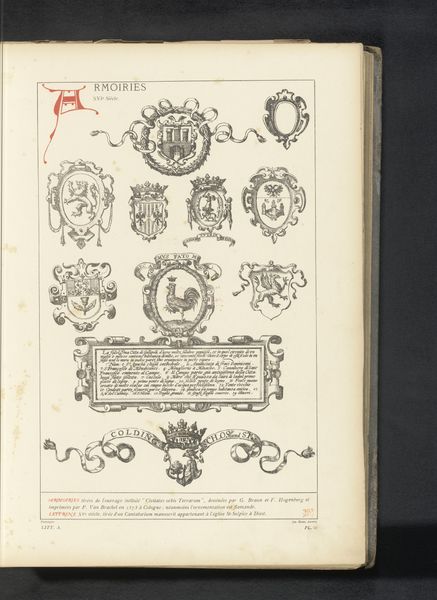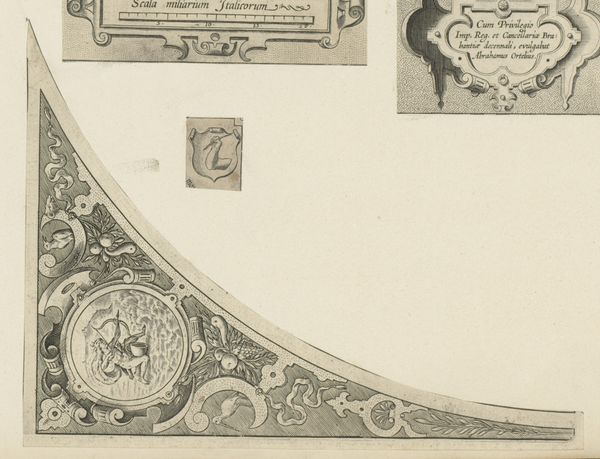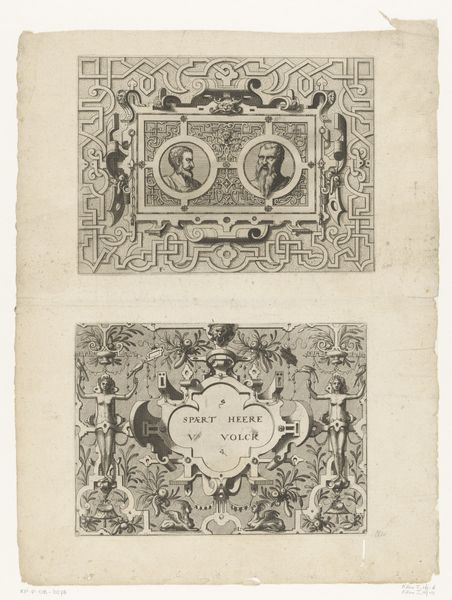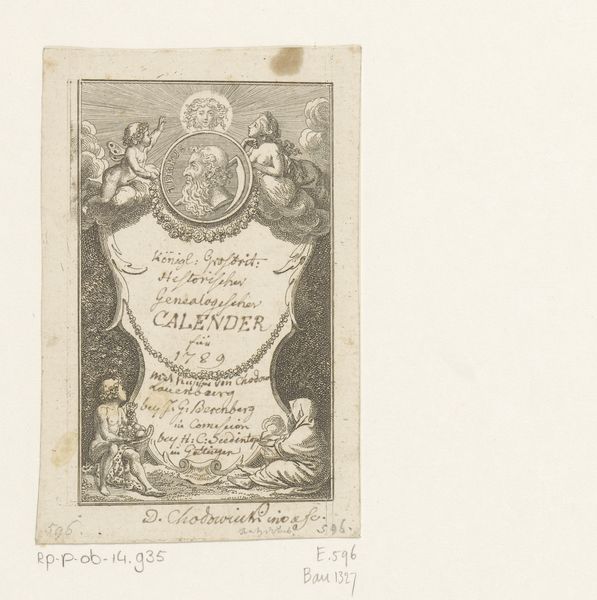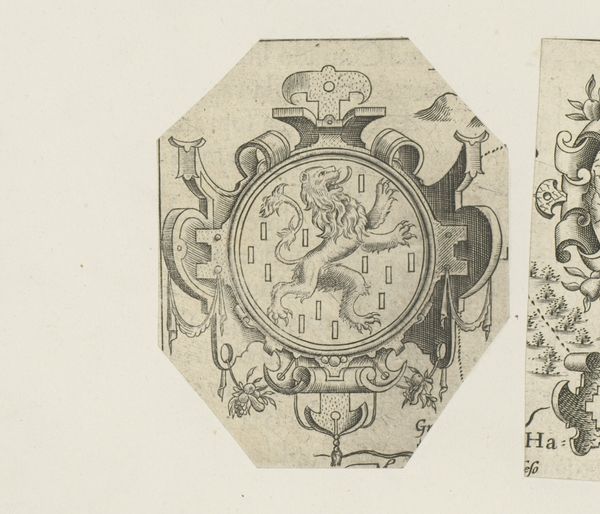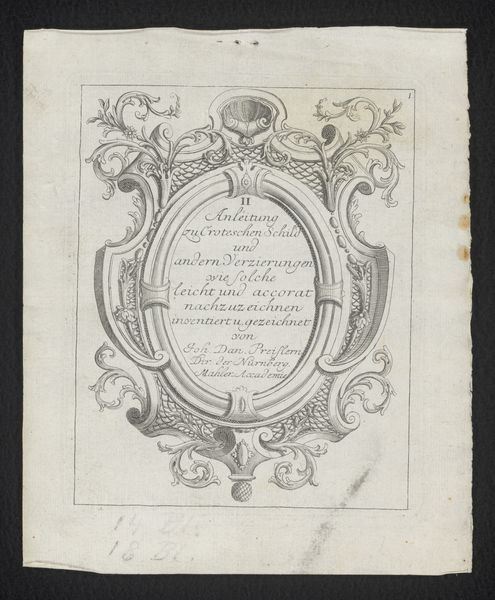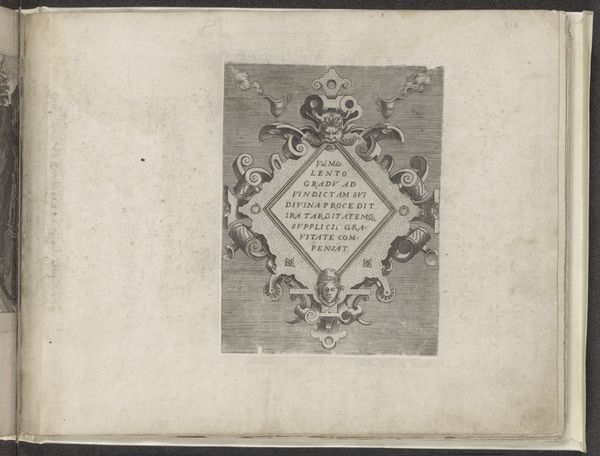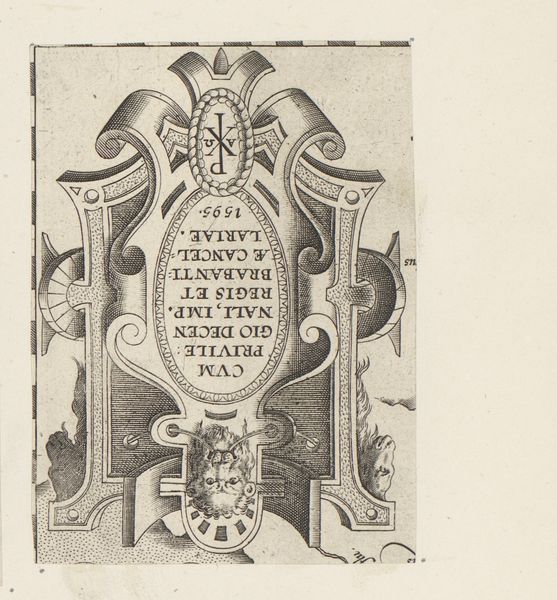
drawing, graphic-art, print, paper, ink, engraving
#
drawing
#
graphic-art
#
medieval
# print
#
paper
#
ink
#
engraving
Dimensions: height 118 mm, width 47 mm
Copyright: Rijks Museum: Open Domain
Curator: Here we have a drawing entitled "Langwerpige staande cartouche met rolwerk," created in 1606 by an anonymous artist. It combines ink and engraving on paper. What are your initial thoughts? Editor: Well, the intricacy of the engraving is immediately striking. The density of the linework, the layers upon layers. It must have taken an enormous amount of time and skill to execute all those decorative flourishes. I’m thinking about the artisanal labor here. Curator: Indeed. This cartouche, meaning a decorative frame, reflects a period where printed imagery played an increasing role in shaping public knowledge. These lists of cities, provinces, numbers—they speak to a society concerned with cataloging its holdings, a budding sense of national and regional identity. Editor: Precisely. And consider the medium itself. Paper was becoming more accessible, but it was still a valuable commodity. The decision to create something so elaborate, almost ephemeral in a sense, tells us something about the priorities of the time. A cost-benefit analysis on displaying social position. Curator: This isn't just about pretty ornament; the work highlights how information was displayed and consumed. The very act of quantifying regions transforms them into entities manageable for governance, a manifestation of early modern statecraft. It visualizes that power. Editor: So you see this piece reflecting emerging national administration by rendering these territories and peoples countable? That´s quite interesting, I thought this would be merely a commission that followed trend. The material itself isn’t precious—the paper, the ink are relatively mundane—but the value lies in the time and expertise needed to craft something so meticulously detailed, right? It´s a contradiction to see this graphic image about states using something available for most society, but with expensive manpower behind it. Curator: A fascinating paradox, exactly. Thank you. The work, at once, displays its function through symbolic display of knowledge and administrative progress. Editor: The layering of historical, artistic, and socio-economical lenses to assess such intricate labor gives an enlightening reading. Curator: A combination which underscores our own biases as observers.
Comments
No comments
Be the first to comment and join the conversation on the ultimate creative platform.
